I am trying to learn jQuery with the following scenario. For this, I tried the following jQuery after reading multiple SO questions; but it did not work
$(this).closest('.viewLogText').parent().find('.reportLog').css("display", "none");
Scenario:
There are three child div elements in a div that has Css class “repeaterRecord”. The child divs are with css classes - repeaterIdentifier, viewLogTitle and reportLog.
There are two divs with this structure (div that has Css class “repeaterRecord”).

The div with viewLog class is as shown below.
<div class="viewLogTitle">
<div class="viewLogText">
View Report Log
</div>
<div>
<img alt="Expand" src="Images/PlusIcon.GIF" class="expandLogIcon" />
<img alt="Collapse" src="Images/MinusIcon.GIF" class="collapseLogIcon" />
</div>
</div>
When the collapseLogIcon image is clicked, I need to hide (only) the nearest div with “reportLog” class (at the same level of "viewLogTitle"). How can we do it using jQuery?
Updated Working Example:
http://jsfiddle.net/Lijo/L9w4F/11/ and http://jsfiddle.net/Lijo/L9w4F/8/ and http://jsfiddle.net/Lijo/L9w4F/12/
REFERENCE: